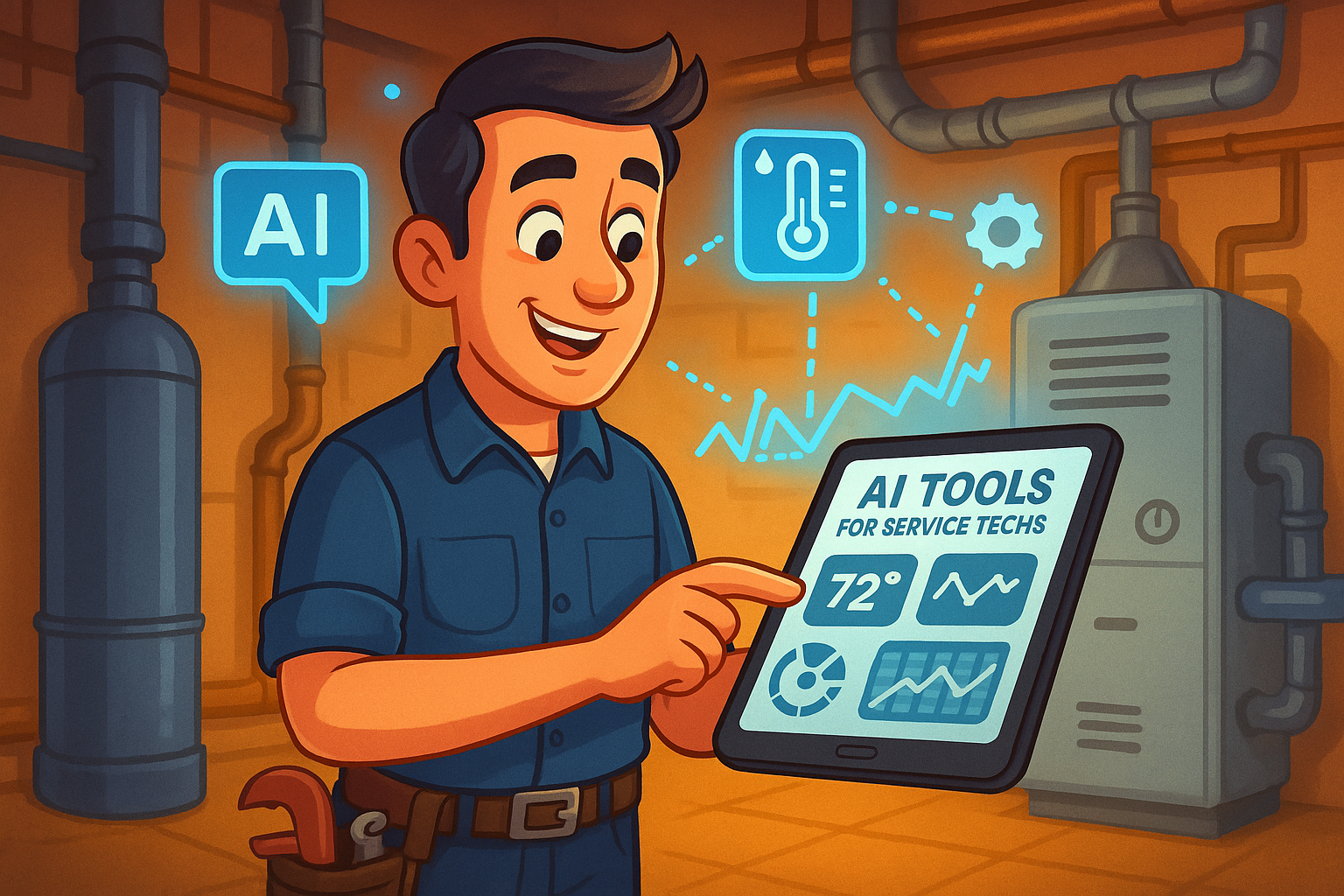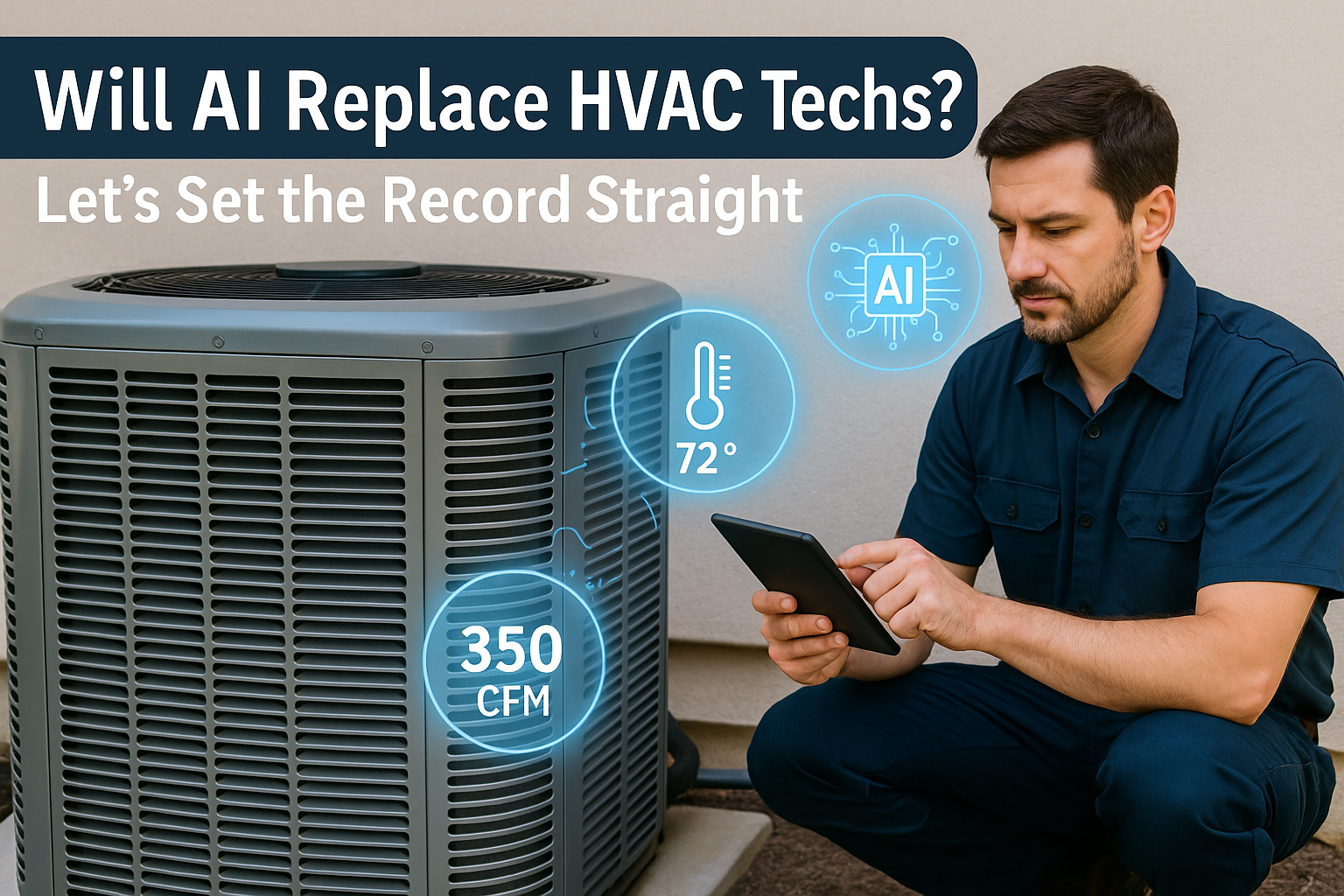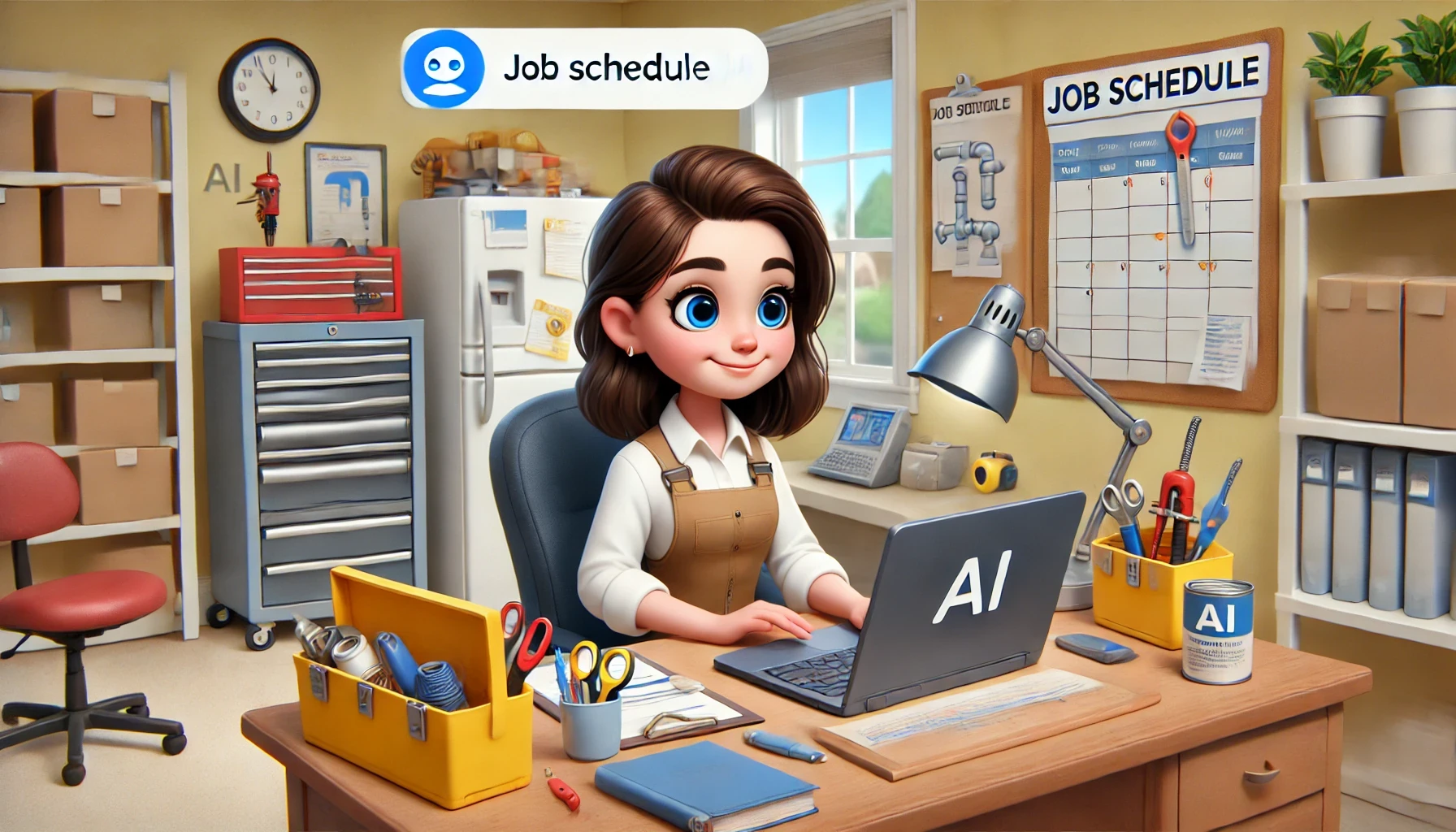How artificial intelligence is changing the game for heating, ventilation, and air conditioning professionals.

Introduction
Artificial intelligence (AI) has exploded into countless industries—healthcare, finance, manufacturing, and yes, HVAC. For those who service, install, or design heating and cooling systems, AI offers a chance to streamline operations, diagnose issues faster, and even predict problems before they arise. No longer just a buzzword, AI is quickly becoming a practical tool for HVAC technicians and businesses.
In this post, we’ll cover the basics of AI in HVAC, look at the benefits you can expect, and explore a few real-world use cases. If you’re an HVAC professional—whether you’re a seasoned veteran or just starting out—this overview will show you why AI matters and how it’s transforming your trade. Future posts will dive deeper into each topic, but let’s get you oriented first.
What Is AI in HVAC?
AI (Artificial Intelligence) refers to computer systems that can learn, reason, and make decisions in a human-like way. Rather than following rigid, pre-programmed rules, AI systems use algorithms—often powered by machine learning—to analyze large amounts of data and adjust their output based on patterns they detect.
In HVAC, these systems can analyze data from equipment sensors, building management systems (BMS), or even smart thermostats. They look for trends or anomalies that a human might miss, flag potential issues (like failing motors or refrigerant leaks), and suggest the most efficient operating settings to save on energy costs.
Key AI Techniques Used in HVAC
- Machine Learning (ML): Uses historical data to train algorithms that spot trends or forecast future outcomes (e.g., predicting when a system might fail).
- Fault Detection & Diagnostics (FDD): Special algorithms designed to find system anomalies. Instead of waiting for a complete breakdown, FDD can catch problems early.
- Predictive Maintenance: An approach where AI estimates when equipment needs service, helping you fix issues before they spiral into emergencies.
Key Benefits of AI for HVAC Professionals
1. Faster Troubleshooting & Fault Detection
Traditional troubleshooting often relies on a tech’s experience, a process that can take hours if the problem is elusive. AI-driven diagnostic tools sift through sensor data in real-time, pointing you directly to the likely culprit. This means you spend less time guessing and more time fixing.
2. Predictive Maintenance & Reduced Downtime
Many HVAC systems fail in extreme weather when they’re under the most stress—exactly when you can’t afford any downtime. With predictive maintenance, AI spots issues like worn parts or refrigerant leaks before they snowball into costly repairs. The result? Fewer emergency calls and more efficient scheduling for your team.
3. Energy Efficiency & Cost Savings
AI-driven HVAC systems can optimize temperature settings, fan speeds, and humidity controls based on real-time conditions. The system will automatically make incremental adjustments to use the least energy possible while still keeping occupants comfortable. Over time, this can lead to significant utility savings for residential customers and commercial building owners alike.
Real-World Use Cases
Case Study 1: AI-Powered Building Management Systems
Large commercial buildings often have multiple HVAC units and complex ductwork. An AI-powered BMS continuously monitors every aspect—temperature, airflow, humidity, energy usage—and adjusts settings to maintain optimal conditions. The payoff includes:
- Reduced energy costs by identifying inefficiencies in real time.
- Early detection of system failures (e.g., a failing compressor).
- Improved occupant comfort thanks to better airflow and temperature balance.
Case Study 2: Residential Smart Thermostats
Smart thermostats like Nest and Ecobee already have AI components that “learn” a homeowner’s routine. Over time, these devices automatically optimize heating and cooling schedules. The AI might run the AC less when it detects the homeowner is away or adapt to changing weather patterns. For HVAC techs, these devices can provide valuable diagnostics remotely, saving a trip (and a headache).
Case Study 3: Remote Monitoring & IoT Integration
In many modern setups, HVAC components communicate over the Internet of Things (IoT). This allows a technician (or an AI program) to track performance across multiple sites from a single dashboard. When a pressure or temperature reading goes out of range, the system can send alerts—sometimes with suggested fixes—before the client even knows there’s a problem.
Common Misconceptions
“AI Will Replace HVAC Techs”
AI is a tool to assist, not replace. The insights AI provides still need the expertise and hands-on skill of a qualified technician. For instance, an algorithm might point out abnormal pressure readings, but you’ll need a pro to decide if it’s a clogged filter or a more serious mechanical issue.
“AI Requires Expensive Overhauls”
While some advanced systems do cost more up front, not all AI solutions require you to rip and replace existing equipment. Many come as add-on modules, software subscriptions, or even plug-in sensor packages. Over time, energy savings and reduced repairs often offset the initial investment.
“It’s Too Complex to Use Daily”
Yes, AI systems run on complex algorithms, but modern dashboards are designed to be user-friendly. Even if you’re new to AI, you can get the hang of system alerts, recommended settings, and data visualization with minimal training.
Getting Started with AI in Your HVAC Business
- Assess Your Current Setup:
- Find out which parts of your operation are already equipped with sensors or monitoring. If you’re starting from scratch, you might begin by adding a few sensors to track energy usage or system pressures.
- Choose the Right Tools & Platforms:
- Look for solutions with user-friendly dashboards and solid customer support. Consider how easily the tool integrates with your existing equipment.
- Train Your Team & Encourage Buy-In:
- If you’re an HVAC business owner, it’s crucial to ensure your staff understands AI’s benefits. Offer short trainings or share success stories so technicians see the value of using AI tools in the field.
Future Trends to Watch
- Advanced Fault Detection & Diagnostics: AI models will become more precise, reducing false alarms while catching more nuanced equipment issues.
- Smart Homes & IoT: As more devices go online—like ventilation systems, dehumidifiers, and air purifiers—AI can coordinate them to maintain ideal indoor climates.
- Sustainability & Green Tech: Expect AI to play an even bigger role in optimizing energy efficiency and reducing HVAC-related environmental impacts.
Conclusion & Call to Action
Artificial intelligence isn’t a distant future for HVAC—it’s already here. From quick troubleshooting to energy-saving optimizations, AI-powered systems can give HVAC professionals an edge in a competitive market. Ready to learn more? Stay tuned for our upcoming deep-dive articles, where we’ll explore predictive maintenance, advanced fault detection, and real-life case studies in greater detail.
Want to keep up with the latest in AI 4 HVAC?
- Sign up for our newsletter to get practical tips and insider insights straight to your inbox.
- Check out our YouTube channel for short tutorials and demo videos.
Your journey into AI in HVAC is just beginning, and we’re here to guide you every step of the way.
Thank you for reading! If you have any questions or tips to share, drop a comment below or reach out on social media.



